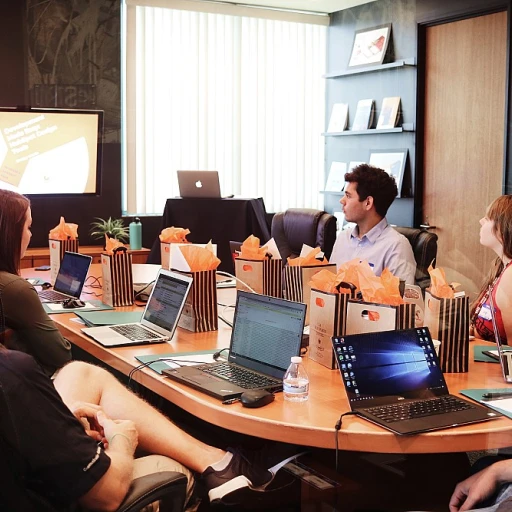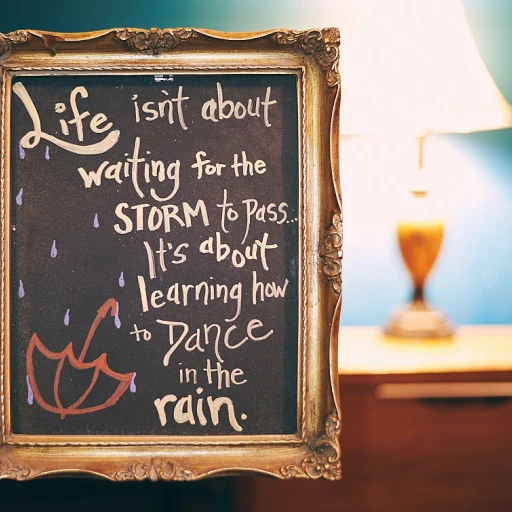Understanding the Importance of Learning Environments
The Crucial Role of Learning Environments in Education
Every student, whether in elementary school or high school, spends a significant portion of their day within the learning environments of their schools. These environments play a pivotal role in shaping educational experiences and student outcomes. An effective classroom design can influence student engagement, promote collaborative commons, and create spaces where student data can drive personalized learning. Understanding the significance of learning environments is thus essential for educators and administrators alike.
The environment in which students and teachers interact is not merely a backdrop; it is a dynamic component of the educational process. Physical aspects such as lighting, furniture, and spatial organization can contribute significantly to a student's ability to concentrate and work effectively. When well-designed, these physical spaces become safe, secure, and inspiring.
Maximizing the Learning Experience
School districts are increasingly recognizing the need for adaptable, multi-functional classrooms. To help students thrive, it is essential to prioritize environments that support both individual and group work. This approach fosters collaboration while allowing space for focused solo tasks. Furthermore, integrating outdoor environments into the educational framework can offer fresh perspectives and stimulate creativity among students.
Moreover, the environment must facilitate effective spaces education for students and faculty. The layout and availability of resources can have a profound impact on student outcomes. Each learning space needs to provide possibilities for adaptation to different teaching methods and learning styles.
The Interplay of Environment and Faculty
In shaping conducive learning environments, the role of teachers cannot be understated. Their ability to engage students and customize the learning environment to their needs is vital for success. Environments which encourage teacher-student and student-student interactions promote a more dynamic educational climate. Supporting faculty to utilize spaces efficiently and adaptively can significantly improve the quality of education.
Key Elements of High-Quality K-12 Learning Spaces
Creating Spaces that Enhance Learning
To create high-quality K-12 learning spaces, understanding the core elements that make these environments effective is crucial. The design of educational spaces must cater to the diverse needs of both students and faculty, fostering an environment conducive to learning and development.
- Flexible Classroom Design: Classrooms should be designed to support various modes of learning, from individual tasks to collaborative group work. Incorporating movable furniture allows teachers to reconfigure spaces to better suit different activities, enhancing student experiences.
- Safe and Secure Spaces: Ensuring that the physical environment students engage with is safe and secure is paramount. School students should feel protected, allowing them to focus on their education without distractions or concerns about their safety.
- Outdoor Learning Environments: Utilizing outdoor spaces can enrich the educational experience. Exposure to the natural environment not only supports physical well-being but also encourages experiential learning opportunities that are invaluable to students' development.
- Integration of Technology: In today's digital age, incorporating technology is not just an enhancement but a necessity. Learning environments equipped with the latest technological tools enable schools to collect and analyze student data effectively, allowing for a more personalized educational approach.
- Adaptation for Various Education Levels: The needs of elementary school students differ from those in high school or higher education. Spaces should be designed with the specific age group in mind, catering to the developmental stages and learning abilities of the students they serve.
These elements are vital in crafting an environment where students and teachers can thrive. With a focus on design and understanding of the nuances of different educational stages, schools can create spaces that are not only functional but also inspiring. For more insights on unlocking leadership potential through comprehensive training in educational contexts, explore the insights
here.
The Role of Teachers in Shaping Learning Environments
The Influence of Educators in Crafting Learning Atmospheres
Teachers play a pivotal role in shaping the learning environment within schools. Their influence extends beyond mere instruction, as they actively contribute to the design and functionality of the classroom. By understanding the unique needs of their students, educators can tailor the physical space to enhance learning experiences.
In a well-designed classroom, teachers can facilitate group work and collaborative commons, fostering an environment where students feel safe and secure. The arrangement of furniture, the use of outdoor spaces, and the incorporation of technology all contribute to creating a dynamic learning space. This adaptability is crucial in both elementary and high school settings, where diverse learning styles and needs must be accommodated.
Moreover, teachers have the responsibility to analyze student data to inform their classroom design decisions. By leveraging this data, they can create environments that not only support academic achievement but also promote social and emotional well-being. This holistic approach ensures that the learning environment is conducive to the overall development of students.
In addition to their role in classroom design, teachers also serve as facilitators of learning environments that extend beyond the physical space. By incorporating technology, educators can create virtual spaces that complement traditional classroom settings. This integration of digital tools allows for a more personalized learning experience, helping students to engage with the material in meaningful ways.
Ultimately, the role of teachers in shaping learning environments is multifaceted. They must balance the demands of curriculum delivery with the need to create spaces that are adaptable, inclusive, and supportive of all students. As schools continue to evolve, the expertise and creativity of teachers will remain essential in crafting environments that inspire and empower students to reach their full potential.
For more insights on how to elevate your talent through reskilling, visit this resource.
Incorporating Technology for Enhanced Learning
Integrating Technology into Learning Spaces
Incorporating technology is a fundamental aspect of enhancing the learning experience for students. The integration of technological tools into the classroom design not only modernizes the learning environment but also creates opportunities for diverse educational experiences. This makes the physical space of a classroom more adaptable to various learning styles.
Modern classrooms often include interactive whiteboards, tablets, and digital projectors. Such devices have become essential components in schools, aiding in both teaching and learning processes. Utilizing data from these technologies, teachers can effectively gauge student progress and tailor their teaching methods accordingly.
Creating Collaborative Environments
Designing spaces that allow for seamless integration of technology fosters an environment where students can engage in collaborative commons and group work. This helps students work well in teams, an essential skill in today’s educational and professional landscapes.
Additionally, technology-enhanced classrooms support students' physical experiences by incorporating learning tools that cater to various senses and learning preferences, making education more inclusive and accessible. Teachers play a crucial role in creatively utilizing these tools to encourage active student participation.
Adapting Spaces for Different Educational Levels
The design of learning spaces, whether in an elementary school or high school, must align with the specific needs of the student body. For example, spaces in higher education often leverage technology to facilitate digital lectures and virtual group work, which differs from the more hands-on and interactive approach required at the K-12 level.
Outdoor spaces, too, can benefit from technological integration, perhaps through online collaboration platforms that extend the classroom beyond its physical boundaries. This adaptability can make learning environments safe, secure, and dynamic, with a capability to fluidly switch from indoor to outdoor learning modes.
Ultimately, the strategic incorporation of technology in school environments plays a pivotal role in forming effective, innovative, and adaptable learning spaces that empower both students and teachers. Such spaces are essential components of a forward-thinking school district committed to preparing students for future educational and professional challenges.
Challenges in Creating High-Quality Learning Environments
Addressing the Challenges of Designing High-Quality Learning Environments
Creating effective learning environments for students in K-12 education is a multifaceted challenge. Schools, whether elementary or high school, must consider several factors.
One significant challenge lies in accommodating the diverse needs of students. Each classroom must be designed to support a variety of learning styles and abilities, enabling all students to engage meaningfully with the material. This requires thoughtful consideration of the classroom design and furniture selection, ensuring flexibility and adaptability for different activities, such as group work or individual study.
The physical environment of a school plays a crucial role in fostering a safe, secure, and productive learning space. Schools must prioritize student safety, incorporating features that create an inclusive and welcoming environment. Teachers and students alike benefit from spaces that support positive interactions and minimize distractions.
Budget constraints often limit the ability of school districts to create and maintain high-quality learning spaces. Ensuring adequate funding for physical resources and technology integration is a continuous struggle for many educational institutions. Collaborations with stakeholders can provide creative solutions to overcome financial barriers, ensuring that all students benefit from enriched learning environments.
Technology integration presents both opportunities and challenges. While digital tools can enhance students' learning experiences, they require ongoing investment in infrastructure and faculty training. Maintaining up-to-date technology and addressing connectivity issues are vital considerations in modern educational environments.
Finally, assessing the effectiveness of learning spaces requires the collection and analysis of student data. Schools must use data to inform their strategies, ensuring that environments are continuously refined to meet the evolving needs of both students and teachers. By doing so, educators can enhance student engagement and facilitate better educational outcomes.
In conclusion, overcoming these challenges demands a collaborative effort from all stakeholders in education. Through thoughtful design and strategic resource allocation, schools can create learning spaces that support the holistic development of their students.
Future Trends in K-12 Learning Environments
Innovative Approaches and Adaptive Learning Models
As we venture into the future, the landscape of K-12 learning environments is being shaped by innovative approaches and adaptive learning models. Schools are increasingly focusing on environments that promote flexibility, collaboration, and personalized learning experiences for students.
Emphasis on Flexible and Adaptable Spaces
Many school districts are prioritizing flexible and adaptable spaces that can easily transition from individual work to group work. This shift in classroom design emphasizes the importance of furniture that can be reconfigured to suit different learning activities. Schools encourage environments that support both collaborative commons and individual learning corners, ensuring space is optimized for various educational needs.
Technological Integration for Personalized Learning
Incorporating technology within learning environments is no longer optional but rather an essential component in modern education. Student data can be leveraged to tailor learning paths, helping students progress at their own pace. This data-driven approach fosters a more personalized learning environment where student progress can be continually monitored and adjusted as needed.
Outdoor and Natural Elements in School Design
Increasingly, schools are incorporating outdoor and natural elements into their design to create a more holistic learning environment. Outdoor spaces not only provide a change of scenery for students and teachers but also support physical and mental well-being. Integrative designs involve using the outdoors as an extension of the classroom, providing varied experiences for students.
Growing Importance of Safe and Secure Learning Environments
Future trends highlight the importance of creating safe and secure learning environments for school students. Ensuring that students feel safe is crucial for effective learning and positive student outcomes. Schools are adopting advanced security measures while maintaining a welcoming environment.
The Role of Emerging Educational Trends
As educational trends continue to evolve, the role of students, teachers, and school faculty in shaping the learning environment becomes more significant. Teachers are pivotal in the design and utilization of learning spaces, fostering environments that support innovation and creativity. As illustrated in previous sections, the collaborative effort between students and educators is vital for successful learning outcomes.














